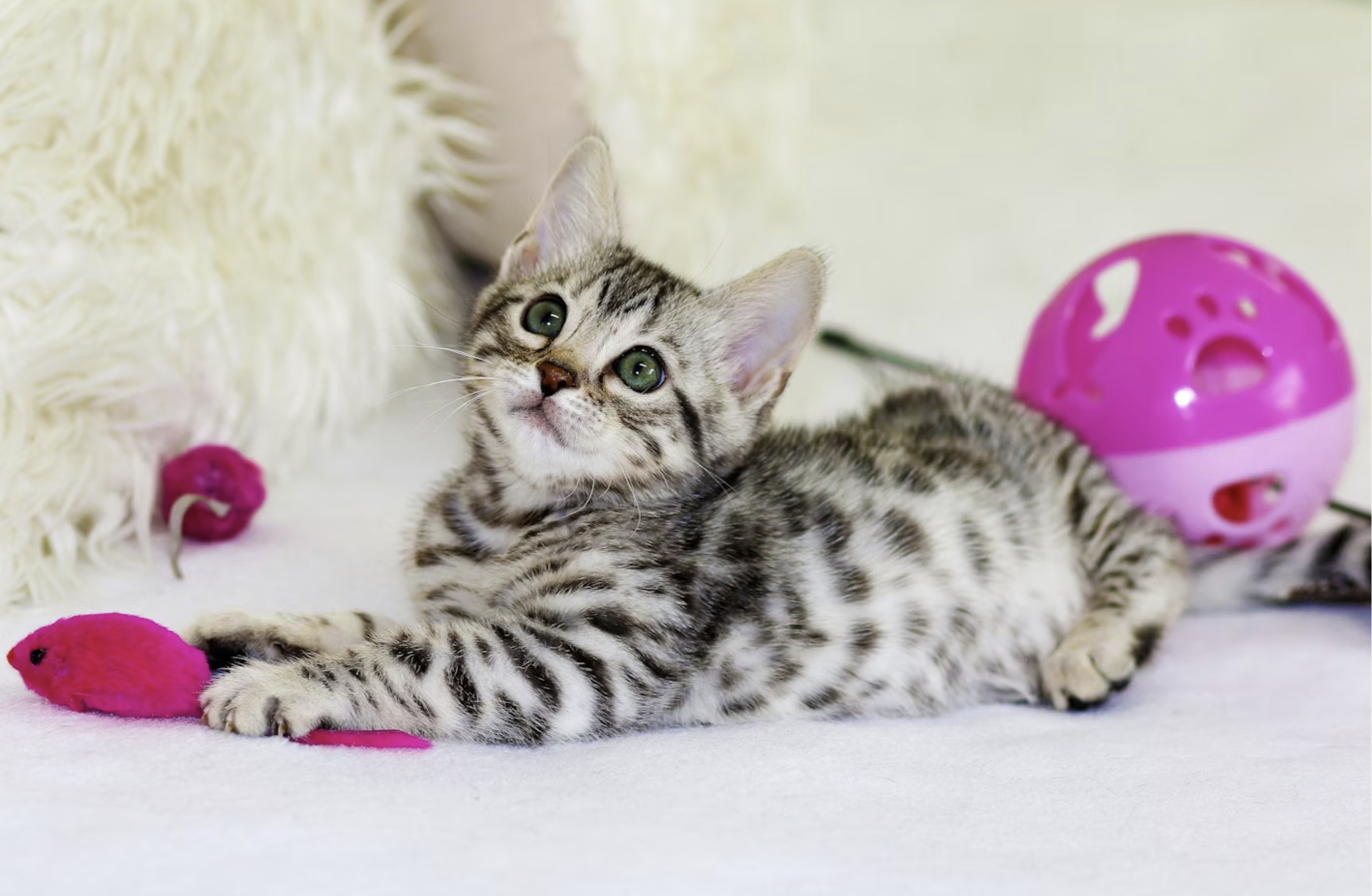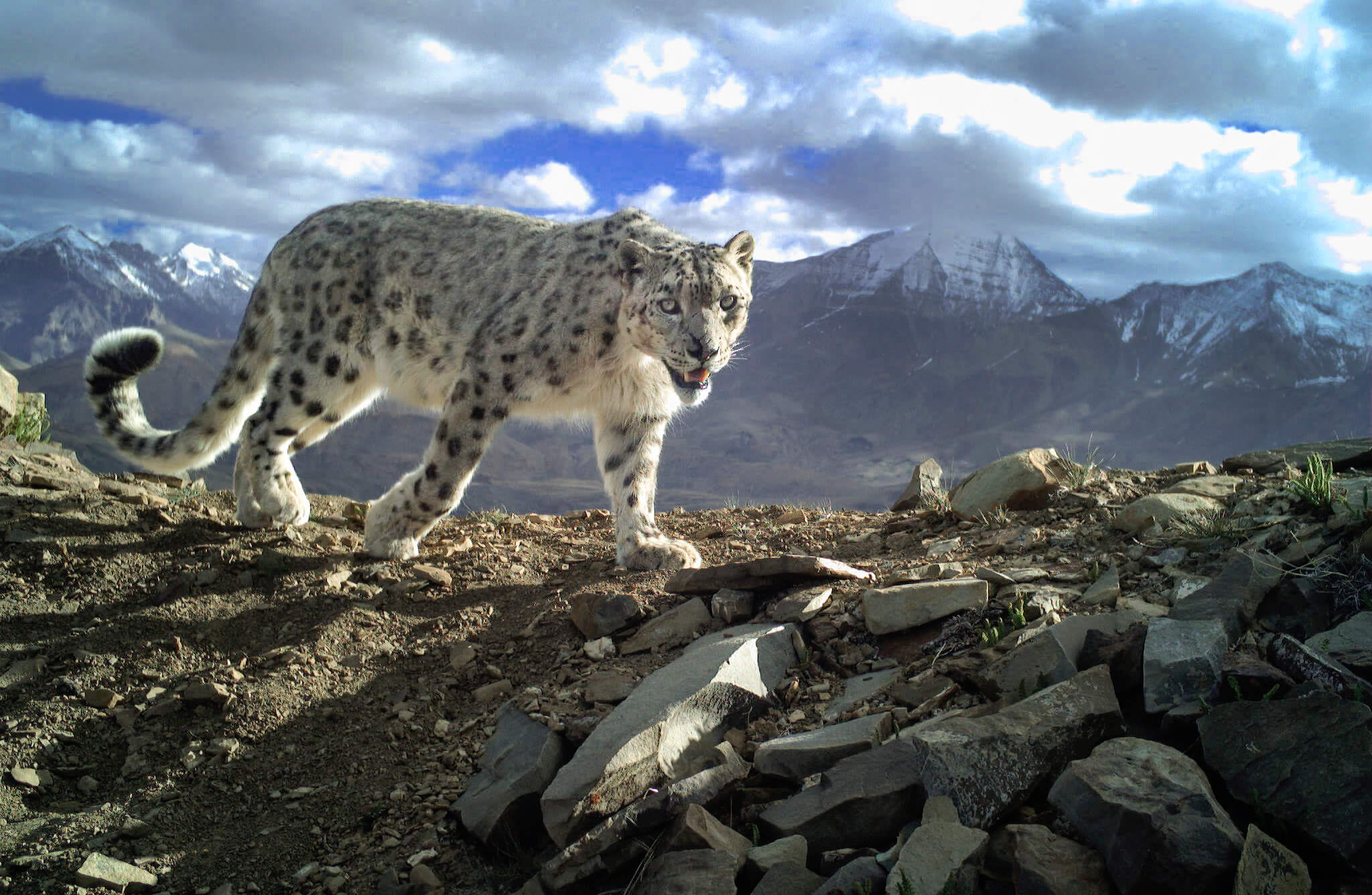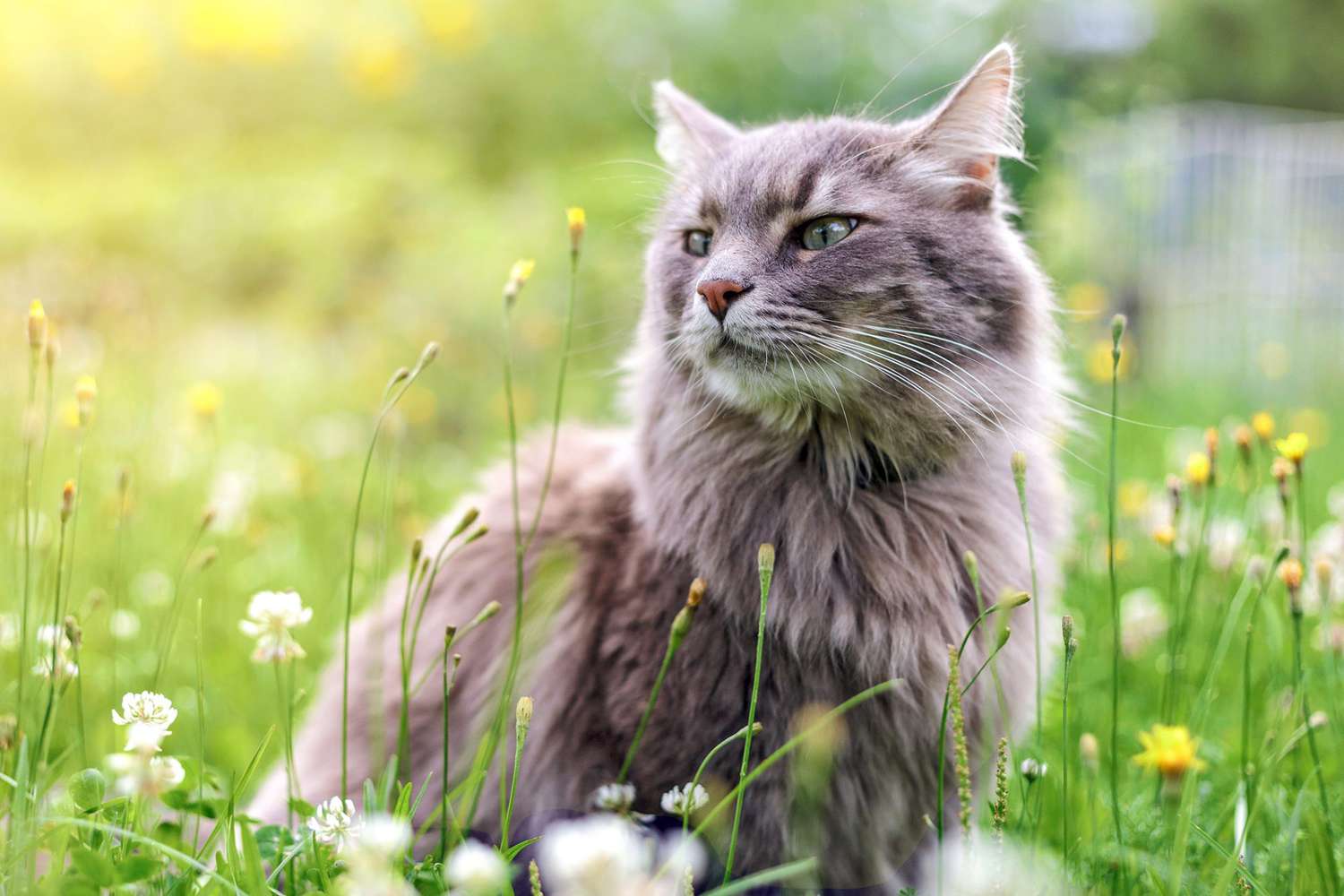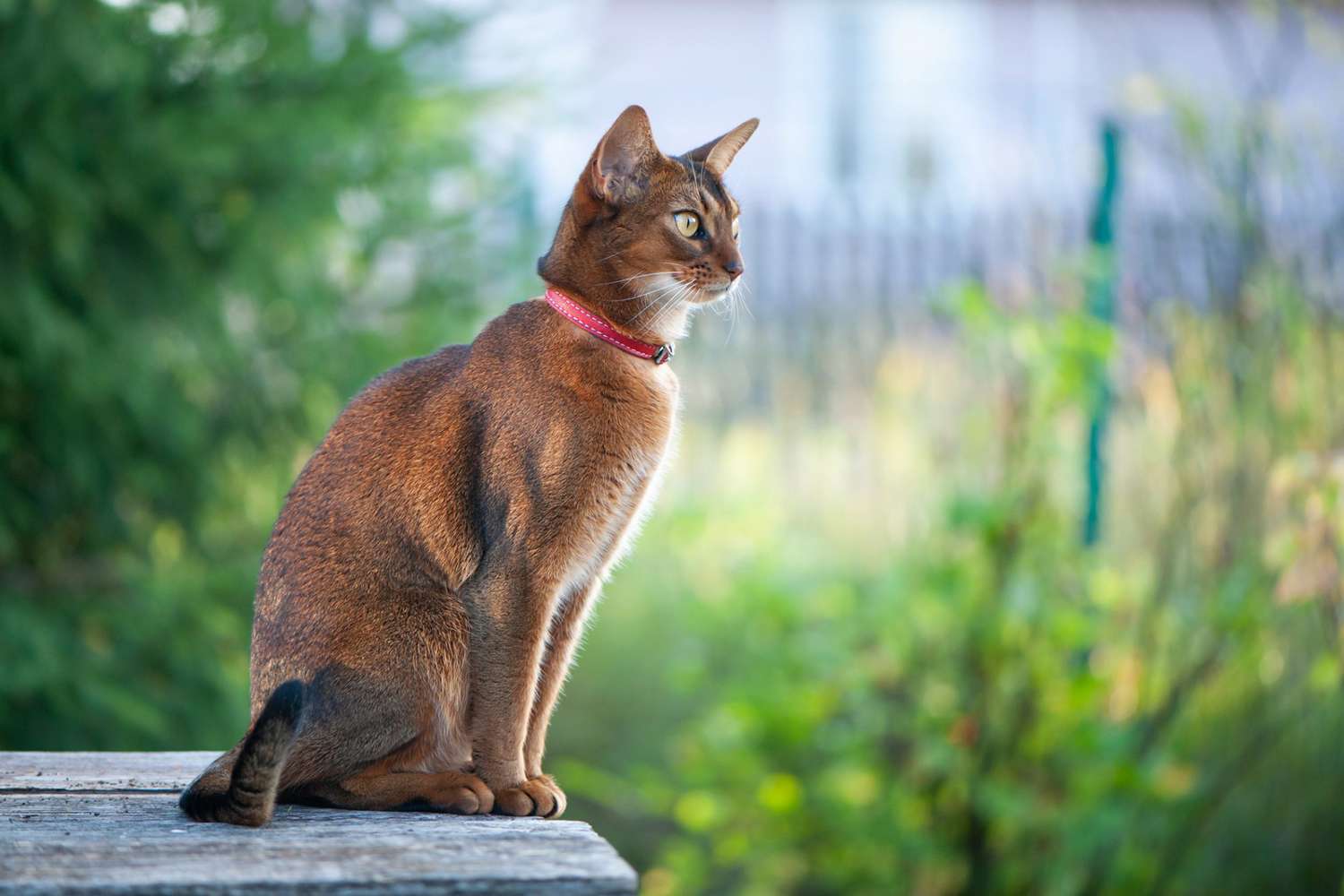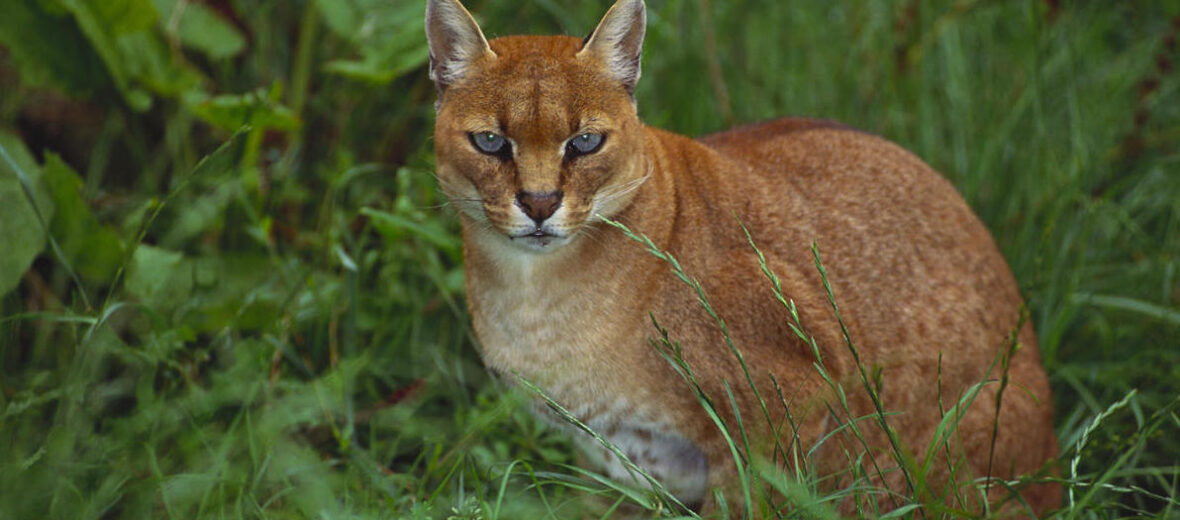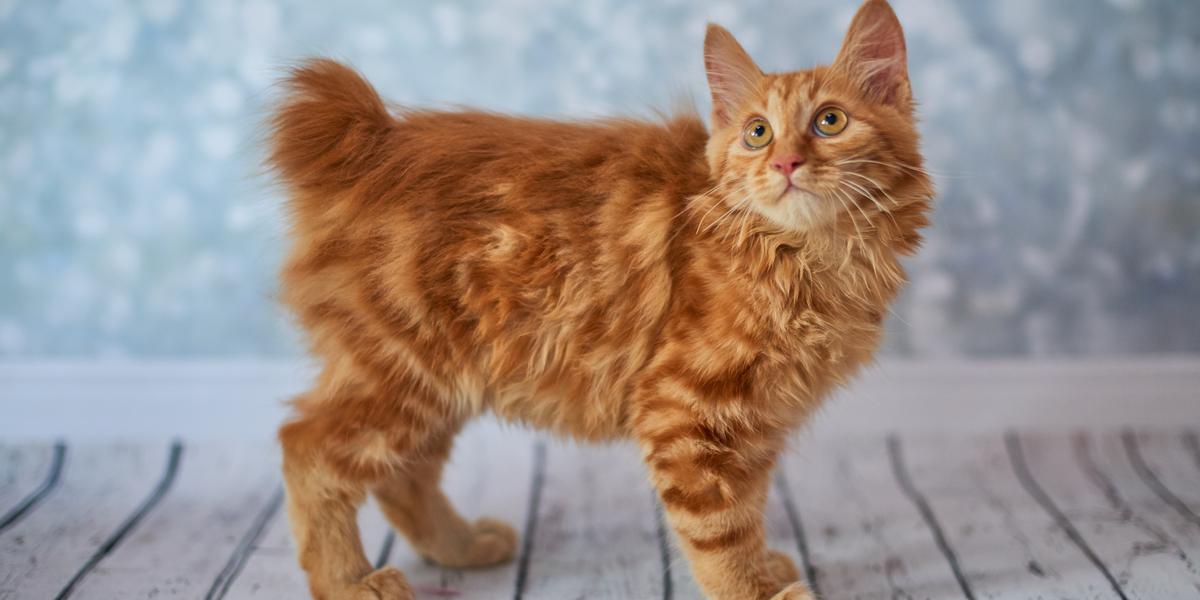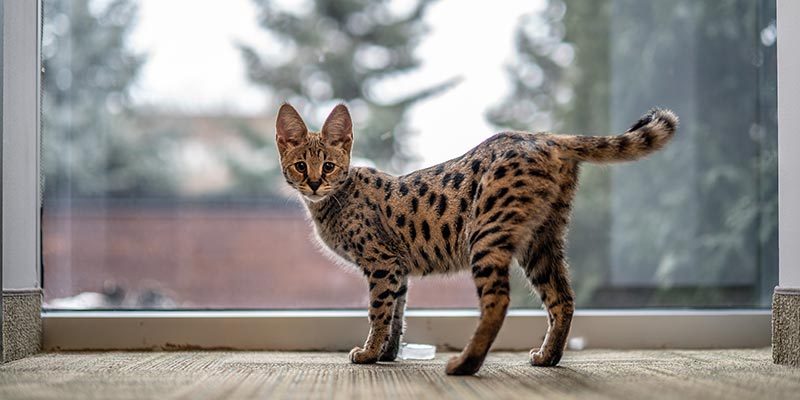Hairless cats are a unique and fascinating breed of felines that have become increasingly popular in recent years. These cats are the result of genetic mutations that have done away with their protective fur, resulting in a hairless or partially hairless appearance.
Despite their lack of fur, hairless cats are just as lovable and affectionate as their furry counterparts. In fact, many people who suffer from cat allergies may find that a hairless cat is just what they need, as they tend to shed and lick their fur less, making them more hypoallergenic than other cats.
You are reading: 10 Types Of Hairless Cats
In this article, we will explore 10 different types of hairless cats, from the well-known Sphynx to the unique Lykoi, and learn about their characteristics, care requirements, and more.
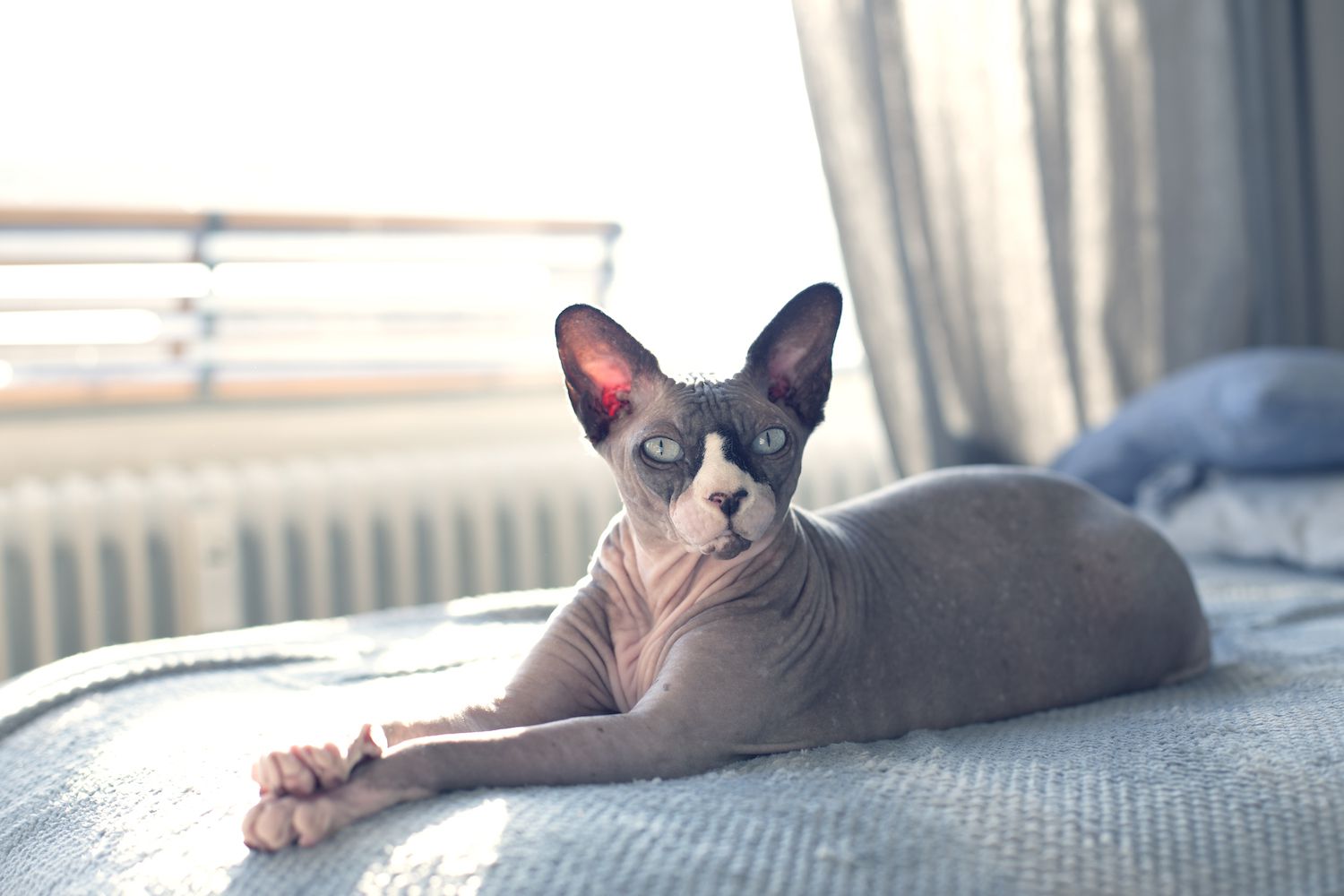
10 Types Of Hairless Cats
Sphynx
The Sphynx is a breed of hairless cat that is known for its unique appearance and friendly personality. Originating in Canada in the 1960s, the Sphynx was developed through selective breeding of hairless cats, resulting in a breed with no fur or only a fine layer of peach fuzz.
Due to their lack of fur, Sphynx cats lose body heat more readily than coated cats, making them both warm to the touch and prone to seeking out warm places.
The breed standards for Sphynx cats are defined by The International Cat Association (TICA) and include wedge-shaped heads with prominent cheekbones, large lemon-shaped eyes, and very large ears with hair on the inside but soft down on the outside base.
Sphynx cats are sociable, highly active, and inquisitive cats that require a high level of enrichment, including simulated hunting games and interactive play. They are also very talkative and require grooming once a week. Sphynx cats are not ideal for family homes and need a calm environment.
Bambino
The Bambino is a relatively new breed of cat that was created by crossing the Sphynx and Munchkin breeds. Here are some characteristics and facts about the Bambino:
Appearance:
– Short legs inherited from the Munchkin breed
– Large upright ears
– Usually hairless, but some Bambino cats do have fur
– Small to medium-sized cat
– Coat colors: black, white, cream, brown, fawn
– Coat patterns: solid, pointed, shaded, bicolor
– Eye color: blue
Personality:
– Affectionate, active, and playful but not overly energetic
– Mischievous side
– Enjoys playing but doesn’t need too much exercise
– Enjoys the company of its family and reluctant to be alone for very long
Care:
– Bambino cats are not hypoallergenic
– Vulnerable to injuries due to their hairlessness and should be protected from other pets’ bites or scratches as well as excessive sun exposure
– Indoor cats due to their vulnerability to temperature and sun
– Grooming is required to keep their skin healthy
Genetics and health:
– Bambino is called a mutation breed because it is a breed that requires both recessive mutations for the hairless gene and dominant mutations for the dwarfed limbs
– Mutation breeding can be disastrous to the health of the produced kitten if not done by an experienced breeder
– The Bambino breed is prone to developing bacterial infections due to their hairlessness
Overall, the Bambino is an affectionate and playful breed that requires special care due to its hairlessness. It is important to find an experienced breeder to ensure the health of the kitten.
Donskoy

The Donskoy, also known as the Don Sphynx or Russian Hairless, is a hairless cat breed of Russian origin. Here are some characteristics and facts about the Donskoy:
Appearance:
– Hairless breed with wrinkled skin, especially concentrated on the face, neck, chest, and the base of its tail
– Medium-sized and muscular build
– Triangular head with large ears and almond-shaped eyes, giving them an elf-like appearance
– Lack whiskers
– Distinctive long, webbed toes
– Coat colors: black, white, blue, red, cream, and tabby
– Eye color: green, blue, or gold
Personality:
– Active, playful, and friendly
– Get along well with other cat breeds, especially other playful cats
– High activity levels can cause challenges with older cats
– Capable of learning tricks and playing fetch
Care:
– Require frequent grooming, in spite of their lack of coat
– Over-bathing can cause the skin to become very oily
– Indoor cats due to their vulnerability to temperature and sun
– Vulnerable to injuries due to their hairlessness and should be protected from other pets’ bites or scratches as well as excessive sun exposure
Genetics and health:
– Not related to the better-known Sphynx cat whose characteristic hairlessness is caused by a recessive mutation in the keratin 71 gene
– Mutation breeding can be disastrous to the health of the produced kitten if not done by an experienced breeder
– Prone to developing bacterial infections due to their hairlessness
Read more : 9 Types Of Cats – List of Cat Breeds
Overall, the Donskoy is an active and playful breed that requires special care due to its hairlessness. It is important to find an experienced breeder to ensure the health of the kitten.
Peterbald
The Peterbald is a relatively new breed of cat that originated in St. Petersburg, Russia in 1994 from an experimental breeding by Olga S. Mironova. Here are some characteristics and facts about the Peterbald:
Appearance:
– Resemble Oriental Shorthairs with a hair-losing gene
– Can be born bald, flocked, velour, brush, or with a straight coat
– Those born with hair, excepting the straight-coats, can lose their hair over time
– Come in all colors and markings
Personality:
– Outgoing, energetic, and intelligent
– Form strong bonds with their family
– Get along well with adults, children, dogs, and other pets
– Do not like to be left alone for long periods
Care:
– Require weekly grooming to keep their skin healthy
– Indoor cats due to their vulnerability to temperature and sun
– Vulnerable to injuries due to their hairlessness and should be protected from other pets’ bites or scratches as well as excessive sun exposure
Genetics and health:
– The breed was created from an experimental mating of a Don Hairless male and an Oriental Shorthair female
– Mutation breeding can be disastrous to the health of the produced kitten if not done by an experienced breeder
– Prone to developing bacterial infections due to their hairlessness
Overall, the Peterbald is an outgoing and intelligent breed that requires special care due to its hairlessness. It is important to find an experienced breeder to ensure the health of the kitten.
Elf Cat
The Elf Cat is a relatively new breed of cat that was created by crossing the Sphynx and American Curl breeds. Here are some characteristics and facts about the Elf Cat:
Appearance:
– Hairless breed with curled ears inherited from the American Curl breed
– Can have a small amount of fur on the face, ears, and tail
– Medium-sized cat with a muscular build
– Coat colors: all colors and patterns
– Eye color: blue, green, gold, or odd-eyed
Personality:
– Extremely sociable, playful, and intelligent
– Mischievous and curious
– Affectionate and friendly
– Form strong bonds with their family and do not like to be left alone for long periods
Care:
– Require weekly grooming to keep their skin healthy
– Indoor cats due to their vulnerability to temperature and sun
– Vulnerable to injuries due to their hairlessness and should be protected from other pets’ bites or scratches as well as excessive sun exposure
Genetics and health:
– The breed was created by crossing the Sphynx and American Curl breeds
– Mutation breeding can be disastrous to the health of the produced kitten if not done by an experienced breeder
– Prone to developing bacterial infections due to their hairlessness
Overall, the Elf Cat is an extremely sociable and playful breed that requires special care due to its hairlessness. It is important to find an experienced breeder to ensure the health of the kitten.
Ukrainian Levkoy
The Ukrainian Levkoy is a hairless cat breed of distinct appearance, originating in Ukraine in 2000. Here are some characteristics and facts about the Ukrainian Levkoy:
Appearance:
– Hairless breed with inward-folding ears
– Medium-sized cat with a longish body, appearing both muscular and slender
– Soft, elastic skin with an excess of it
– Angular contour of its head and “stepped” profile (dog-face appearance)
– Large, but not wide almond-shaped eyes
– Coat colors: all colors and patterns
Personality:
– Friendly, playful, and intelligent
– Sociable and enjoys human or family company as well as the company of other domestic pets
– Affectionate and loyal to its owner
– Needs lots of toys and playtime
Care:
– Does not need brushing but requires special skin care to give protection against direct sun
– Indoor cats due to their vulnerability to temperature and sun
– Vulnerable to injuries due to their hairlessness and should be protected from other pets’ bites or scratches as well as excessive sun exposure
Genetics and health:
– Created by crossing hairless Donskoy females with Scottish Fold males
– Mutation breeding can be disastrous to the health of the produced kitten if not done by an experienced breeder
– Prone to developing bacterial infections due to their hairlessness
Overall, the Ukrainian Levkoy is a friendly and playful breed that requires special care due to its hairlessness. It is important to find an experienced breeder to ensure the health of the kitten.
Canadian Hairless
touch, with a skin texture akin to that of a soft peach or a smooth nectarine. The Sphynx cat breed is known for its outgoing, friendly, and affectionate personality. They are highly intelligent and playful, and they enjoy being around people and other pets.
Sphynx cats require weekly grooming to keep their skin healthy, and they are indoor cats due to their vulnerability to temperature and sun. They are prone to developing bacterial infections due to their hairlessness.
Although hairless cats have been reported throughout history, breeders in Europe have been developing the Sphynx breed since the early 1960s. T
he contemporary breed of Sphynx cat is distinct from the Russian hairless cat breeds, like Peterbald and Donskoy. The Sphynx cat is also known as the Canadian Sphynx, as it was developed in Canada.
Minskin
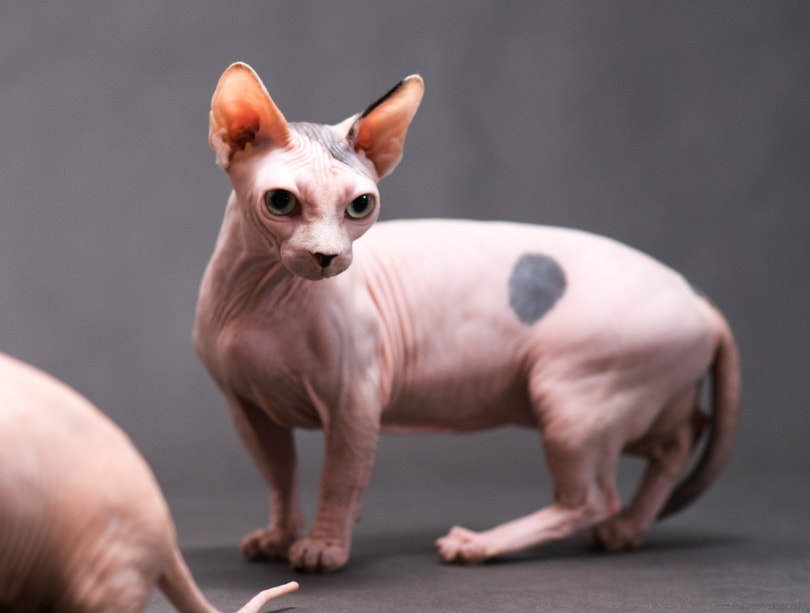
Read more : Tonkinese Cat Breed Information, Characteristics, Pictures & Health
The Minskin is a relatively new breed of cat that was developed only a couple of decades ago by a man named Paul McSorley from Boston, Massachusetts. Here are some characteristics and facts about the Minskin:
Appearance:
– Stocky body, short legs, and large blue eyes that give it an alien-esque appearance
– Small to medium-sized semi-cobby muscular body, a rounded head, large ears that are wide at the base, a short broad muzzle with prominent whisker pads and eyes that are large and round, spaced well apart, giving them an open and alert expression
– Sparse coat, which is more dense on their outer extremities, giving them a unique coat description of “fur-points” that define the mask, ears, legs, and tail, with a more sparsely coated cashmere-like torso
– Coat colors: all colors and patterns
Personality:
– Outgoing, sweet, playful, and affectionate
– Intelligent and entertaining
– Lap cats that enjoy snuggling with their owners
– Get along well with other animals and humans
Care:
– Require little grooming due to their sparse coat
– Indoor cats due to their vulnerability to temperature and sun
– Vulnerable to injuries due to their hairlessness and should be protected from other pets’ bites or scratches as well as excessive sun exposure
Genetics and health:
– Created by intentional hybrid cross-breedings between the Munchkin and Burmese cat breeds, with the addition of Sphynx and Devon Rex
– Mutation breeding can be disastrous to the health of the produced kitten if not done by an experienced breeder
– Prone to spine curvature and concave or convex sternums
Overall, the Minskin is an outgoing and affectionate breed that requires special care due to its hairlessness. It is important to find an experienced breeder to ensure the health of the kitten.
Dwelf
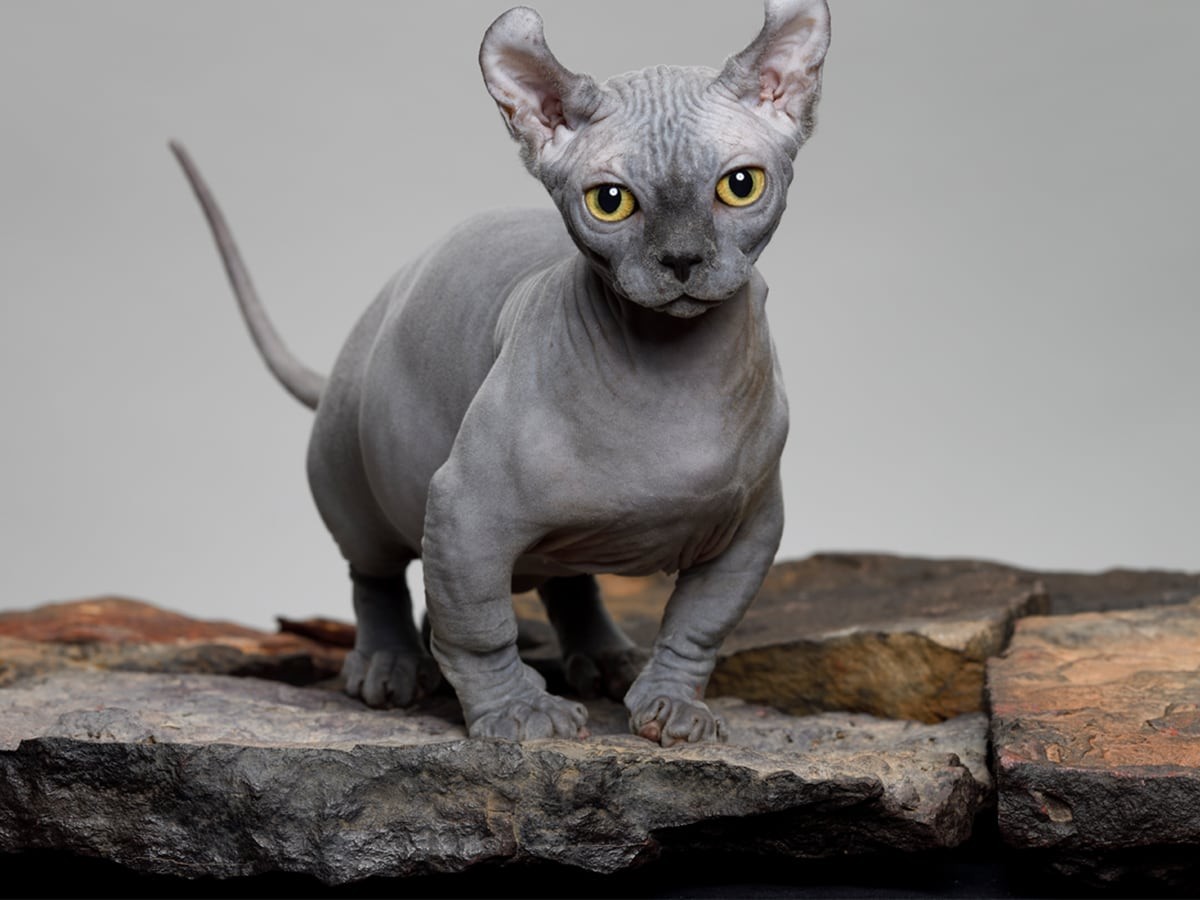
The Dwelf is a relatively new breed of cat that was created by crossing the Munchkin, Sphynx, and American Curl breeds. Here are some characteristics and facts about the Dwelf:
Appearance:
– Hairless breed with short legs inherited from the Munchkin breed
– Small to medium-sized cat with a muscular build
– Elf-like appearance with large ears and almond-shaped eyes
– Coat colors: pink, beige, grey, and other colors
– No body hair, but may have some fur on the face, ears, and tail
Personality:
– Sociable, friendly, and affectionate
– Intelligent and playful
– Dog-like personality
– Enjoy being around people and other pets
Care:
– Require weekly grooming to keep their skin healthy
– Indoor cats due to their vulnerability to temperature and sun
– Vulnerable to injuries due to their hairlessness and should be protected from other pets’ bites or scratches as well as excessive sun exposure
Genetics and health:
– Created by intentional hybrid cross-breedings between the Munchkin, Sphynx, and American Curl breeds
– Mutation breeding can be disastrous to the health of the produced kitten if not done by an experienced breeder
– Prone to spine curvature and concave or convex sternums
Overall, the Dwelf is a sociable and friendly breed that requires special care due to its hairlessness. It is important to find an experienced breeder to ensure the health of the kitten.
Lykoi
The Lykoi, also known as the wolf cat or werewolf cat, is a rare and unique breed of cat that originated from a natural mutation causing a form of hypotrichia found in domestic short-haired cats. Here are some characteristics and facts about the Lykoi:
Appearance:
– Partially hairless breed with a wolf-like appearance
– Missing coat on the face gives the breed a distinctive look
– Coat colors: all colors and patterns
– Large almond-shaped eyes
Personality:
– Affectionate, sweet, and playful
– Friendly and outgoing
– High level of affection for their owners
– Shed a lot when older, but regrow their hair later in life depending on the season
Care:
– Require weekly grooming to keep their skin healthy
– Indoor cats due to their vulnerability to temperature and sun
– Vulnerable to injuries due to their hairlessness and should be protected from other pets’ bites or scratches as well as excessive sun exposure
Genetics and health:
– The breed was founded in 2011 by Johnny Gobble, Brittney Gobble, and Patti Thomas when two unrelated litters of kittens were presented to the founders as unique cats
– Mutation breeding can be disastrous to the health of the produced kitten if not done by an experienced breeder
– Prone to spine curvature and concave or convex sternums
Overall, the Lykoi is a unique and affectionate breed that requires special care due to its hairlessness. It is important to find an experienced breeder to ensure the health of the kitten.
FAQS
1. Are hairless cat breeds hypoallergenic?
Hairless cats tend to shed and lick their fur less, making them more hypoallergenic than other cats. However, no cat is 100 percent hypoallergenic.
2. Do hairless cats need special care?
Yes, hairless cats require specific care. They often have difficulties staying warm, requiring sweaters and cold weather gear. And if your cat spends any amount of time lying out on a window sill, their skin needs sunscreen. Additionally, some hairless kitties will need regular baths to prevent oil buildup on the skin.
3. What are some common hairless cat breeds?
Some common hairless cat breeds include the Sphynx, Bambino, Donskoy, Peterbald, Ukrainian Levkoy, Elf, Canadian Hairless, Minskin, Dwelf, and Lykoi.
4. Are hairless cats more active than other cats?
Yes, hairless cats tend to be more active and have a higher rate of metabolism, often requiring a little more high-quality food to meet their energy needs.
5. Are hairless cats prone to health issues?
Hairless cats are prone to developing bacterial infections due to their hairlessness. Additionally, some hairless cat breeds are prone to spine curvature and concave or convex sternums.
6. Do hairless cats make good pets?
Yes, hairless cats can make great pets. They are often sociable, friendly, and affectionate, and they get along well with other pets and humans. However, they do require special care due to their hairlessness.
Source: https://petstutorial.com
Category: Cats

